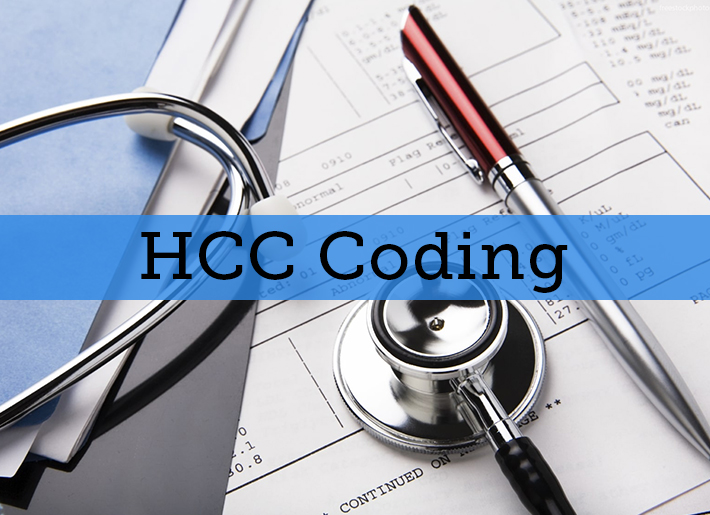In the evolving healthcare landscape, a focus on value-based care is vital. This strategy rewards providers for delivering high-quality care while managing costs effectively. A crucial element of value-based care is risk adjustment, which guarantees that medical groups receive adequate compensation for the complexity of their patient base. HCC (Hierarchical Condition Category) coding is used in this situation. In this article, the advantages of using HCC medical coding in risk adjustment will be covered in detail, along with how it affects patient care and financial sustainability.
Understanding HCC Coding and Risk Adjustment
Risk adjustment is the process used to account for the health expenditure risk associated with individual enrollees in healthcare plans. It guarantees equitable pricing for health insurance and that plans are compensated based on their members’ health status. A risk adjustment model called Hierarchical Condition Categories (HCC) coding divides diagnosis codes into more clinically significant groupings to forecast patients’ future medical expenses.
HCC codes are primarily used in the Medicare Advantage program to modify capitated payments paid to health plans for their members. They are developed from ICD-10 coding by modifying premiums to reflect the risk associated with a group’s unique health demands. These codes also help predict healthcare costs.
The Advantages of HCC Coding for Risk Adjustment
Implementing HCC coding offers a multitude of benefits for healthcare organizations:
Fairer Reimbursement
Precise HCC coding provides a more comprehensive picture of patient complexity. Appropriate risk score results lead to more equitable payer reimbursement. Organizations that treat a more significant percentage of patients with chronic diseases can be paid more under value-based care models. These are designed to offset the more substantial costs of providing this type of care.
Better Financial Viability
Accurate HCC medical coding guarantees that medical facilities fully understand the health requirements of their patient base. This results in more precise risk assessments and, eventually, larger potential revenue.
Improved Care Delivery
HCC coding prompts a more thorough evaluation of patient medical data to accurately detect and record chronic diseases. This all-encompassing strategy may result in earlier detection and treatment of chronic illnesses, therefore enhancing patient outcomes.
Better Population Health Management
HCC coding enables healthcare organizations to create focused population health management plans by drawing attention to the prevalence of chronic illnesses within a patient population. In the long run, these tactics may save healthcare costs by emphasizing patient education, chronic illness management programs, and preventive care.
Encouraging High-quality Care and Results
Accurate HCC coding has a direct impact on patient care approaches. It enables medical professionals to recognize high-risk patients and create customized care management plans to meet individual patient needs. For example, precise information about a patient’s long-term health issues, such as diabetes or heart disease, might lead to the patient’s enrollment in targeted programs that may lower problems and enhance quality of life.
Furthermore, healthcare organizations can concentrate resources on timely involvement and defensive measures if they have improved visibility into their community’s health status. Reducing the need for acute care and costly emergency interventions improves patient outcomes while also helping to reduce total costs.
Facilitating Compliance and Reducing Audit Risks
Compliance with regulations is facilitated for healthcare institutions with the appropriate application of HCC coding. Accurate coding lowers the risk of audits and possible fines because Medicare and other payers closely examine claims to ensure that the recorded medical conditions support capitation payments. Both overcoding, which can lead to fraud investigations, and undercoding, which could cost money and endanger patient care, can cause compliance problems. Compliance is facilitated by an accurate HCC coding system, which guarantees that the patient’s medical record entirely supports diagnosis codes.
Data-Driven Allocation and Decision-Making
A multitude of data can be studied with the help of HCC coding to inform the healthcare system’s decision-making processes. Health plans can use these data to spot patterns, compare results, and assess how well disease management initiatives are working. Furthermore, strategic planning can be assisted by the insights gained from HCC data analysis. This allows for more effective resource allocation and the arranging of treatments according to their expected effects on patient health and system costs.
Competitive Advantage in the Market
Strong HCC coding procedures can provide health planners with a substantial competitive edge in the market. Plans that exhibit a high degree of proficiency in enrollee health management draw in larger risk pools and bargain for better terms from providers. Accurate risk adjustment also makes plans more competitive in the market by allowing them to provide lower premiums without sacrificing quality service.
The Role of HCC Coding in Risk Adjustment
Healthcare organizations can consider the severity and complexity of patient illnesses with HCC Coding in Risk Adjustment. Accurately identifying the seriousness of an illness in a given population allows HCC coding to modify payment schemes to compensate healthcare professionals fairly for their services.
However, risk adjustment goes beyond simple payment. It is essential for advancing high-quality medical treatment and enhancing patient outcomes. Risk adjustment motivates a shift towards proactive and patient-centered healthcare and rewards providers focusing on chronic disease management and preventive care. Everybody’s RAF score is determined at the beginning of each calendar year.
Challenges and Considerations
Although there are many advantages to using HCC coding, there are drawbacks as well.
- Coding Complexity: HCC coding necessitates a detailed comprehension of the rules governing coding and the particular standards used to assign codes. Coders must receive ongoing education and training to ensure correctness.
- Documentation Requirements: Extensive documentation of medical records is necessary for HCC coding. Providers must record all pertinent diagnoses and their severity in their notes to facilitate correct coding.
- Coding Audits and Reviews: Payers may conduct audits to confirm that HCC medical coding is accurate. Appropriate coding procedures require a robust compliance program.
Strategies for Successful Implementation
To gain the full benefits of HCC coding, healthcare organizations can take several steps:
- Invest in Coder Training: Continually teach coders about best practices and HCC coding rules.
- Enhance Documentation Procedures: Urge healthcare professionals to record diagnoses accurately and completely, including all pertinent information needed to support HCC coding.
- Leverage Technology: Consider using computer-assisted coding (CAC) technologies to help with HCC code identification and selection.
- Establish a Compliance Program: To guarantee correct coding procedures, create a thorough compliance program with frequent audits and reviews.
- Establish a Strong Coding Team: Establish a specialized staff to handle risk adjustment and HCC coding procedures.
Wrapping Up
In the age of value-based care, healthcare companies should strategically invest in implementing HCC medical coding for risk adjustment. This promotes improved medical delivery, increases financial sustainability, and guarantees equitable reimbursement. By addressing the obstacles and implementing best practices, healthcare companies can achieve success in the changing healthcare market and fully utilize HCC coding.






